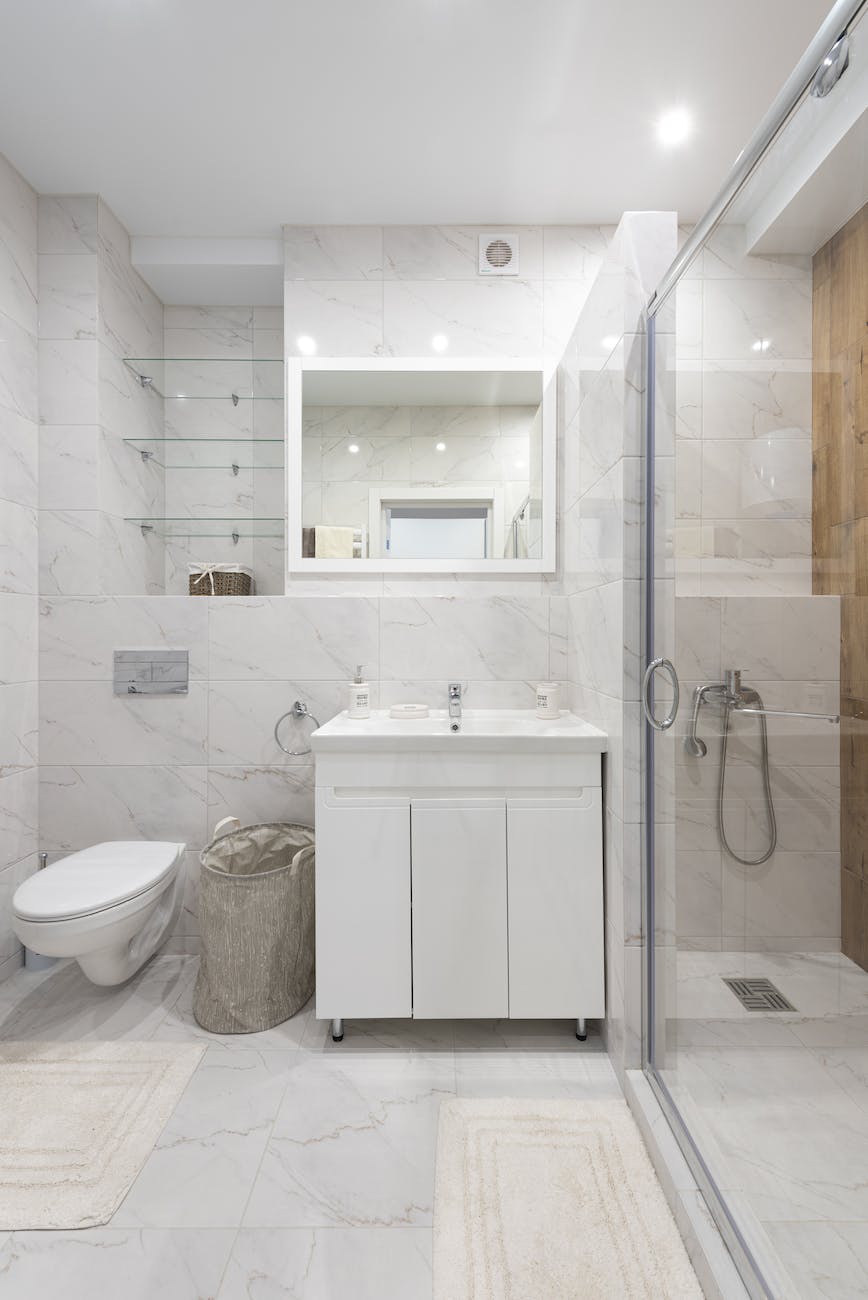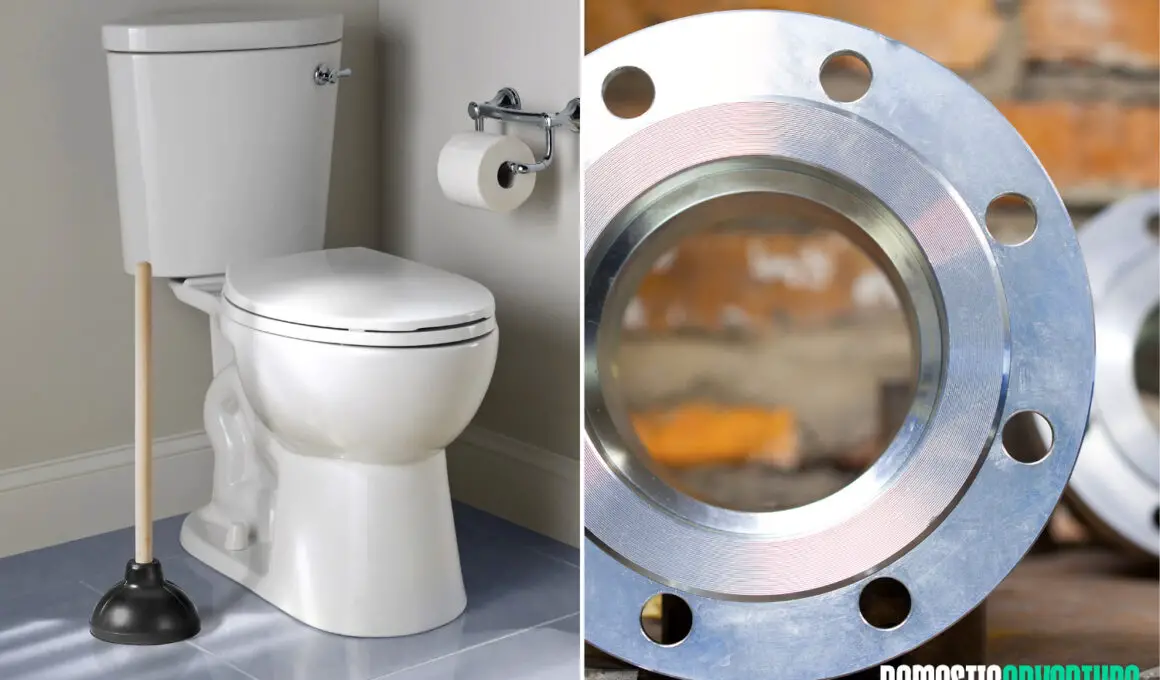Table of Contents Show
The toilet flange is an important component of any bathroom; however, time and time again, there has been a lot of confusion about how it should be installed. The question is whether the toilet flange should flush the floor? It is one that a lot of people need clarity on.
Yes, a toilet flange should be flush with the floor so that the toilet will sit level and not rock. If the flange is not flush with the floor, water can seep through the cracks and cause damage to the flooring. A flush toilet flange also helps to keep the toilet from wobbling and rocking, which can lead to leaks.
In this article, we will answer all of your questions concerning toilet flange and how it should be installed. Read on to find out all we have for you!
RELATED: Do You Need Purple Board On Bathroom Ceiling?
Should The Toilet Flange Be Flush With The Floor?
A toilet flange also called a closet flange, is the part of a toilet that secures the unit to the floor and connects it to the drain pipe. It is an essential part of the overall toilet because it helps to prevent leaks.
The flange is usually made of plastic or metal and has a circular or oval-shaped center that fits around the drain pipe. There are two main types of toilet flanges: flush-mounted and raised.
- Most homes have a flush-mounted flange, which sits level with the finished flooring surface. This flange type is easy to install and can be used with most types of flooring, including tile, laminate, and hardwood.
- The second toilet flange type is raised, which sits above the finished flooring surface. Raised flanges are typically used when the flooring is installed after the flange has been placed. This flange is ideal for floors that will be covered with tile or stone, as it allows for a more seamless appearance.
How To Install A Toilet Flange (New Toilet)
You will need to install a new toilet flange when installing a new toilet or replacing an old one. Many different types of toilet flanges are available, but they all serve the same purpose. The following steps will show you how to install a toilet flange.
- Before you begin, make sure that the area around the drain is clean and free from debris. This will make it easier to work with and also help to prevent any leaks.
- Place the new flange over the drainpipe and align it with the bolts holding it. If there are no bolts, use screws to attach the flange to the pipe.
- Once the flange is in place, tighten the bolts or screws so that it is secure. You may need to use a wrench to do this.
- Place the wax ring onto the flange and then lower the toilet onto it. Ensure the toilet is aligned with the flange’s hole before pressing it down.
- Once the toilet is in place, use a putty knife or another tool to apply pressure around the edges of the bowl where it meets up with the flange. This will help create a solid seal and prevent leaks later on down

How To Add A Toilet Flange To Be Flush With The Floor
If your toilet flange is not flush with the floor, you will be required to install it. Here is how to do it:
- Turn off the water to the toilet. Flush the toilet to empty the bowl and tank.
- Disconnect the water supply line from the bottom of the tank.
- Unscrew the bolts that hold the toilet to the floor and remove the toilet.
- Clean up any old wax or putty from around the drain pipe and on the floor where the toilet was attached.
- Place a new wax ring on the drain pipe and lower the toilet onto it, ensuring it is properly aligned with the bathroom fixtures and walls.
- Screw in new bolts to attach the toilet to the floor and tighten them until they are snug but not overly tight. You don’t want to crack the porcelain!
- Reconnect the water supply line and turn on the water supply. Check for leaks around the base of the toilet and make adjustments as necessary until there are no leaks present
How to Troubleshoot A Toilet Flange
If your toilet flange is not flush with the floor, there are a few things you can do to troubleshoot the issue.
We suggest you first check to see if the flange is loose. If it is, tighten the screws that hold it in place. If the flange is still not flush with the floor after tightening the screws, you may need to add or remove shims to raise or lower the flange.
If you’re having trouble getting the flange level, it’s essential to ensure it’s sitting on a firm surface. For example, if it’s sitting on a tile floor, you may need to remove a section of the tile so that you can access the subfloor and ensure the flange is properly secured.
Once you’ve made any necessary adjustments, you can replace the tile and finish up by caulking around the base of the toilet.
What Should The Distance Between The Floor And The Toilet Flange Be?
There are a few things to consider when determining the distance between the floor and the toilet flange. The first is the type of flooring you have. If you have tile or stone floors, you’ll want to ensure the flange is level with the finished surface of the floor. This will ensure that your toilet sits level and doesn’t rock back and forth.
You may want to place the flange slightly above the finished surface if you have a wood floor. This will help prevent water from seeping underneath the flange and causing damage to your floor.
Another thing to consider is the height of your toilet bowl. Some toilets are designed to be used with a specific height flange, so you’ll want to ensure you get the right one for your toilet. Otherwise, you may end up with a bowl that’s too low or too high relative to the flange.
Finally, remember that most toilets come with an adjustable flange that can be raised or lowered as needed. This can be helpful if you’re unsure about your installation’s ideal height.
Frequently Asked Questions
What Can You Do If The Toilet Flange Is Too Low?
If the toilet flange is too low, there are a few things you can do to fix it. One option is to use a toilet flange extender. This will add a few inches of height to the flange, allowing it to be flush with the floor.
Another option is to install a new toilet flange that is taller than the old one. This may require some plumbing work, but it will ultimately raise the flange to the proper height.
Why Are Toilet Flanges Sometimes Higher Or Lower Than The Floor?
There are a few reasons why the toilet flange might be either higher or lower than the floor. In some cases, the flange is installed before the flooring is put in, so it might be higher to accommodate the thickness of the flooring.
Additionally, if there’s any damage to the sub-flooring around the toilet flange (from water leakage, for example), then the flange might be raised to prevent further damage.
Finally, some people prefer to have a higher or lower flange for aesthetic reasons.
Final Thoughts
You should flush your toilet flange with the floor. However, ultimately, it is up to the homeowner to decide what is best for their home and their budget.
If you are unsure of what to do, we recommend you speak with a professional plumber before making any decisions.









